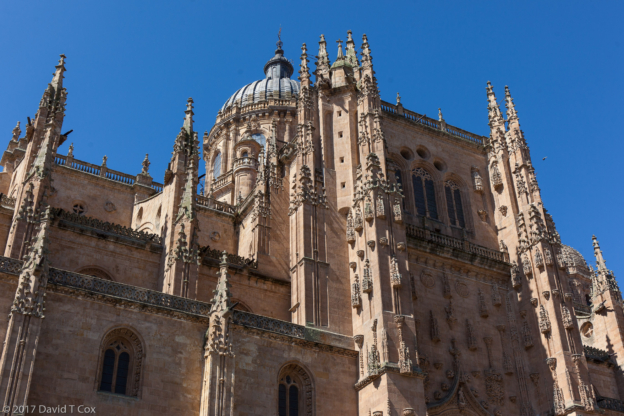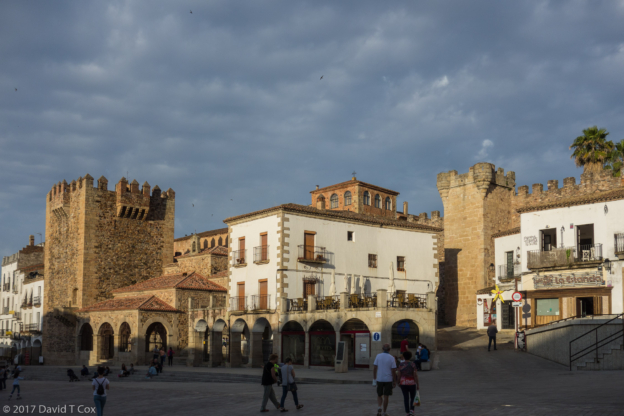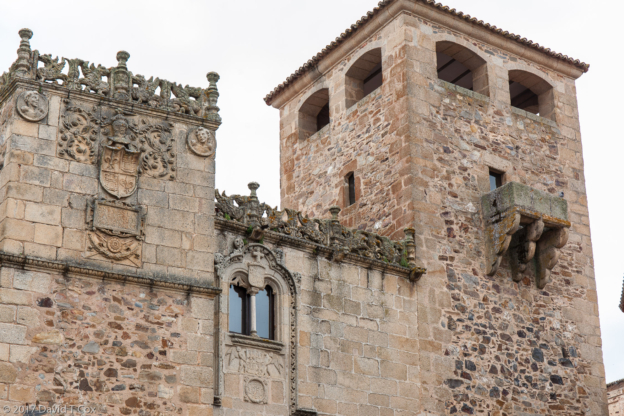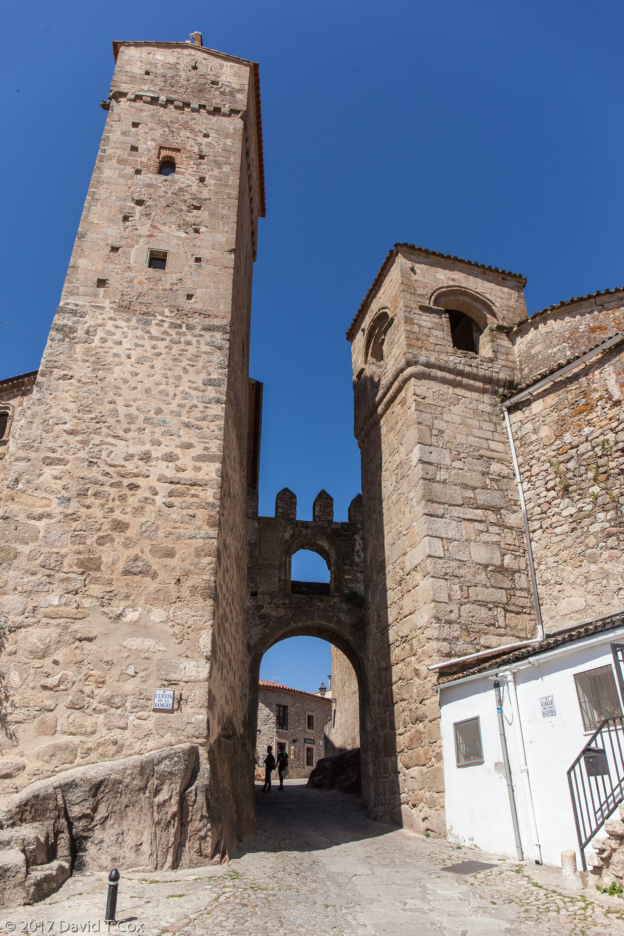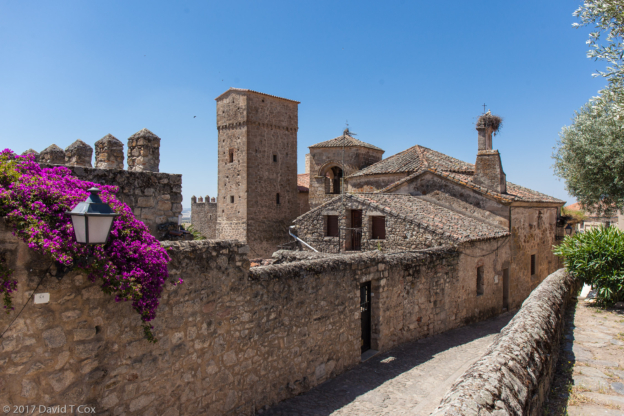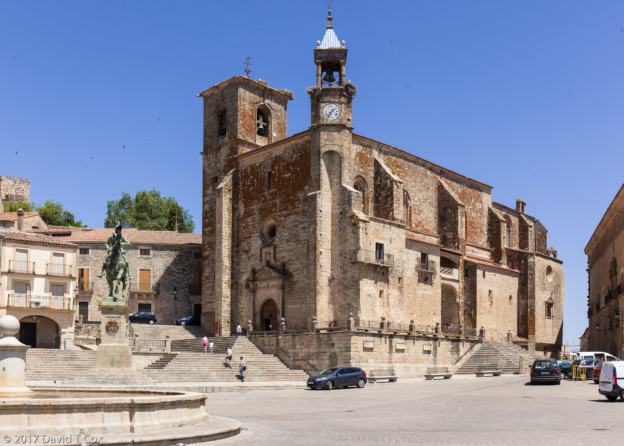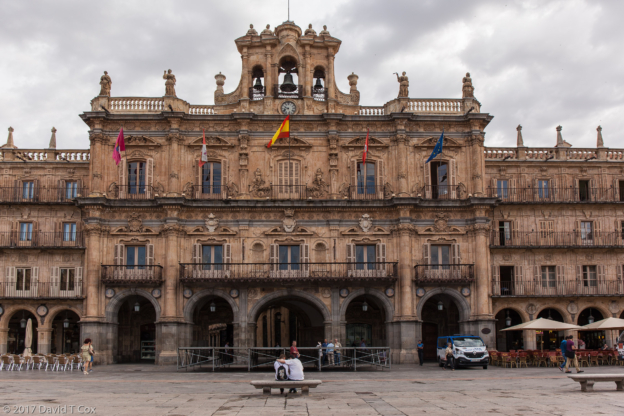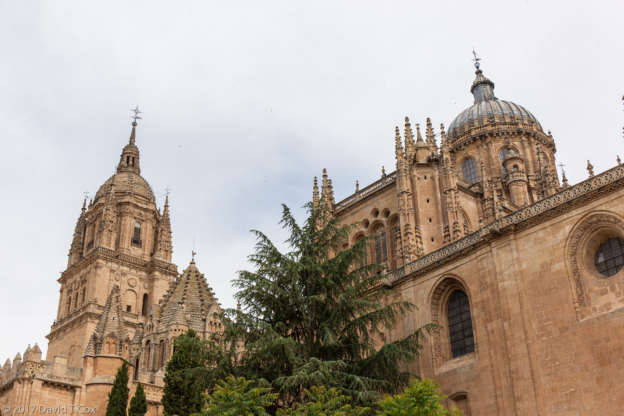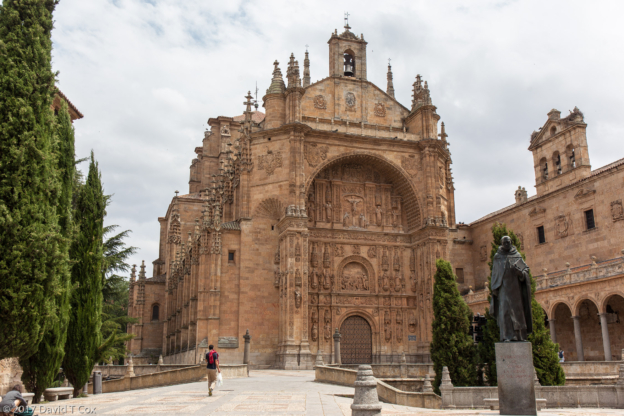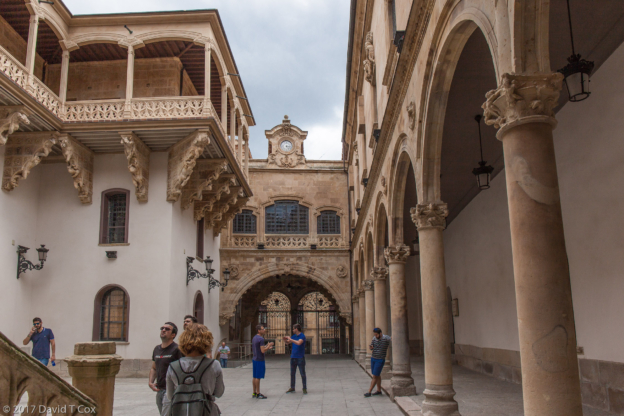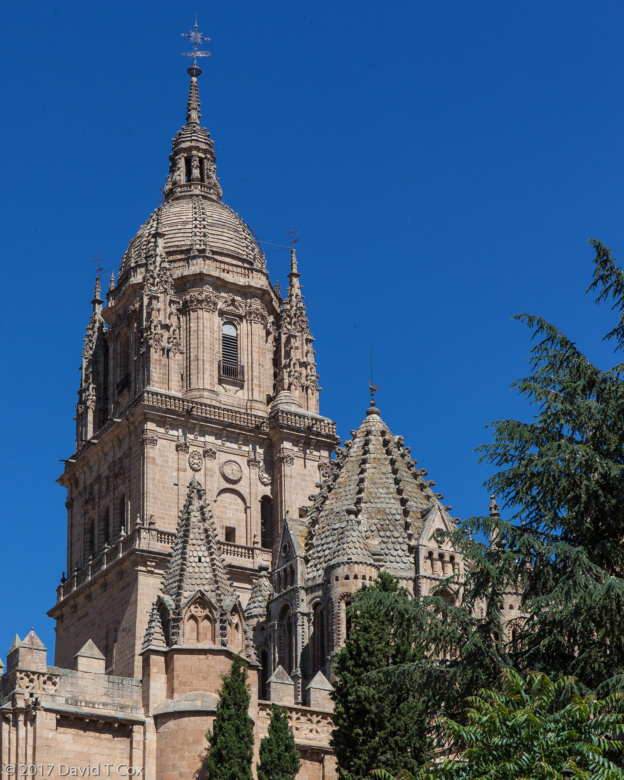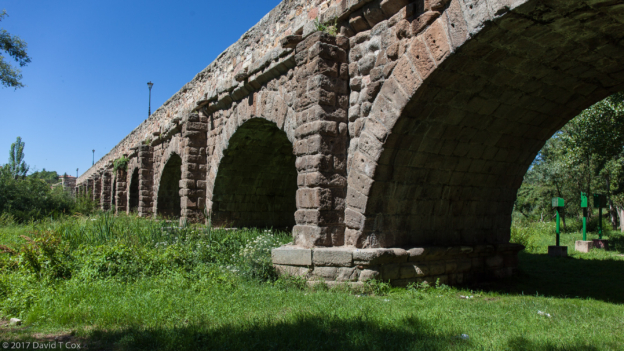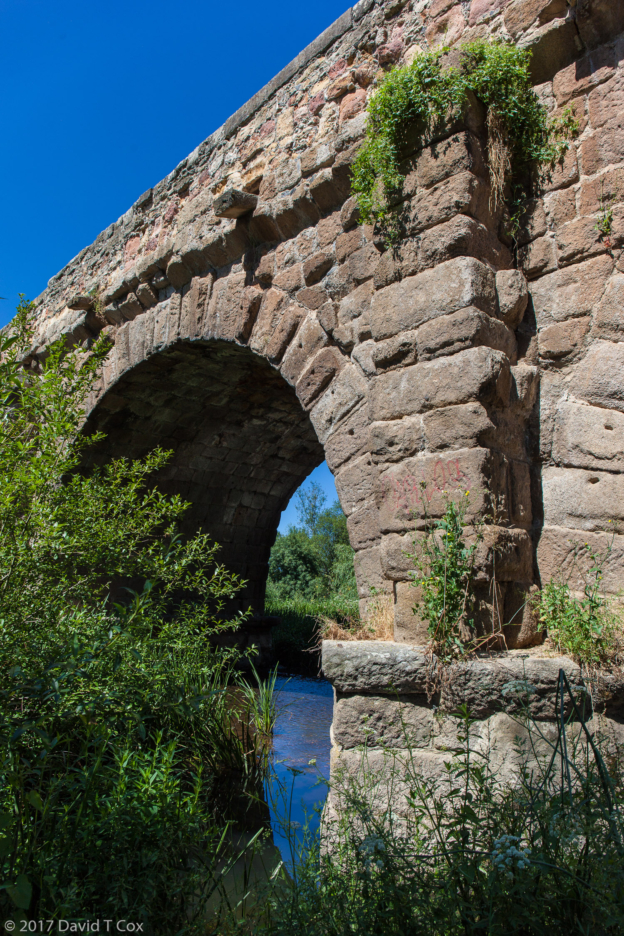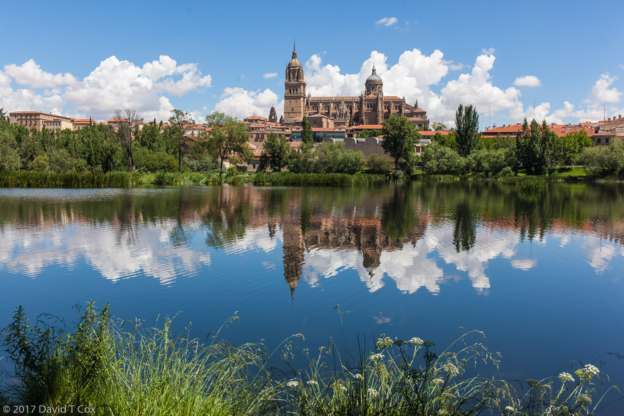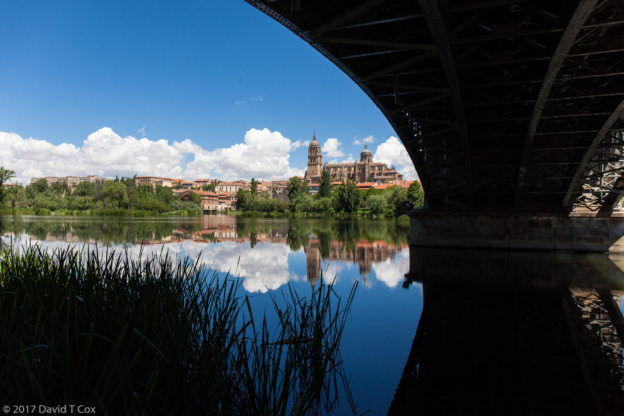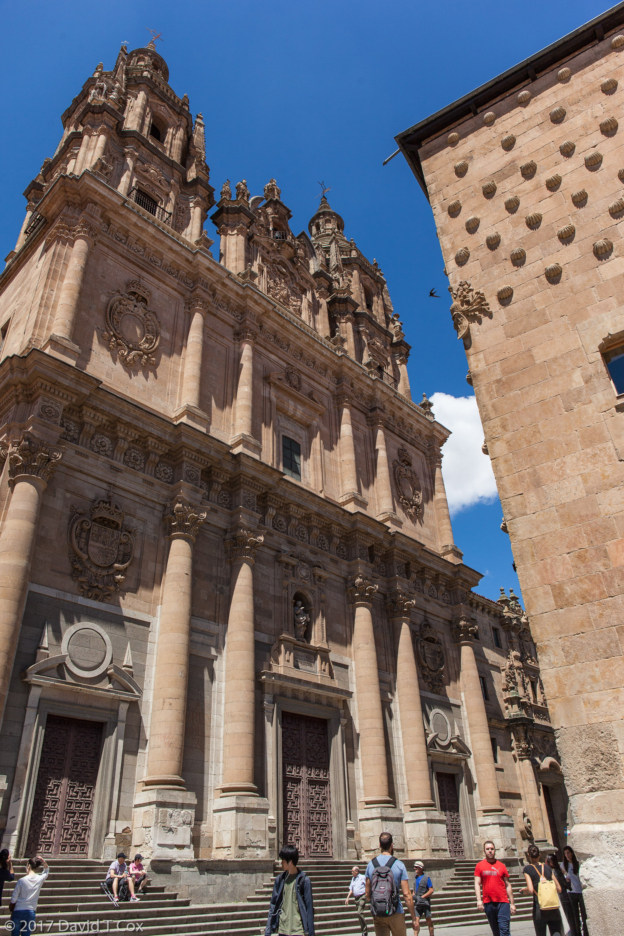All Photos Are Below the Travelogue Text
Click on Any Photo To Open Slide Show
To print the travelogue, right click anywhere on the page. Choose "Print" from your browser dialog box. You can choose Save to PDF in the browser print window.
Share your thoughts.
Email Dave - coxdavid55@hotmail.com
I last reported from Merida, one of the great ancient Roman cities of Spain with the best preserved structures. From Merida last Sunday I traveled north to Caceres in Extremadura, the region which was home to most of the best known Conquistadores of the New World. Caceres preserves what is known as the Monumental City, the “old town” still completely walled, and infused with towers and palaces, parapets, spires and family shields on almost every building. Most buildings date from the 15th and 16th centuries, and display the splendors of construction made possible by the wealth brought home by the conquistadors.
I spent one day traveling the short distance east to Trujillo, a smaller sister city which, in addition to incorporating an old walled city as in Caceres, also contains the older fortress originally built by the Romans, but completely re-built by the Moors during their brief period in control of the region in the 9th and 10th Centuries. Trujillo was home to the two greatest South American Conquistador families, the Pizarros (4 brothers who conquered the Incas) and Orellana (first European to venture up the Amazon). I have, on previous trips, discussed much detail on the various structures and history of the two towns, and will not now repeat that.
From Caceres I traveled further north to my favorite town, perhaps in the entire world – Salamanca. I first came here for a couple of months in 2003 as I was trying to internalize Spanish – actually Castilian, as Spain recognizes 4 different co-official languages nationally, which include Basque, which bears no relationship whatsoever to the other 3 Romance languages – Catalan, Galician and Castilian. I have been back a number of times and always love the place. Again, I will not dwell on all the history and incredible structures, but suffice it to say that the large walled Salamanca Old City is filled with Romanesque, Gothic, Plateresque Renaissance, and Baroque masterpieces of architecture and interior decorations, to accompany one of the greatest of old Roman bridges and one of the four great medieval universities of the world, with the oldest library in Europe. The Old Town still is home to a great university with its 10’s of thousands of university students who party all and every weekend. Through the years of coming here I have always been woken at sunup on Sunday mornings by the loud singing of groups of drunks, returning home from their all-Saturday-night revelry. I love this place.
I have once more a great value hotel room, a huge modern space with balcony and fridge, right off the Plaza Mayor, for about 80 Euros per day. The ancient alleys and streets of the Old City are simply filled with many of Spain’s great Tapas Bars, Cafes and Jamonerias, all with outdoor tables filling the narrow passageways. A handful of my customary tavern hangouts have changed hands, but my three old-time favorites all are still in place and still popular, the Meson Las Conchas, the Ruta de la Plata (used to be called Patio Chico) and the El Ave. Las Conchas was the first tapas bar I was introduced to in Spain back in 2003; it is very traditional, and always has a selection of about 45 different tapas on display, constantly rotating. A wine, or beer, and tapa costs about E2.50. Three to four rounds is quite filling. Many locals order their wine or beer mixed half with sparkling water, thus making a terrific meal without getting drunk. Ruta de la Plata has forever perfected the open, huge, wood-fired grill, which specializes in ribs, lomo and pancetta, all grilled to crackling perfection, which can be enjoyed as tapas or large serving platters as raciones.
Weather, for all but one day in Caceres and every day until today here in Salamanca, has basically been white overcast – rather unimpressive for photos. I did want to re-enact one old custom from my 2003 and 2006 trips; Back then I initially was overwhelmed by the excellent jamon Iberico bellota (the dry-cured ham from the ancient special breed of black Iberian hogs, which are raised in open oak woodland on wild acorns), considered the best – and the most expensive – ham in the world, along with the famous manchego cheese (hard, medium strong flavored sheep milk Spanish cheese), and baguettes integral (freshly baked whole grain crispy baguettes) – these three ingredients combined make the world’s best sandwich – especially when combined with a bottle of Spanish red wine from the Duero River Valley. With these four delicacies in my daypack, quite cheaply acquired from the local Jamonerias, I instituted private picnics on weekends in the tall grasses along the south banks of the Rio Tormes, where there were a number of hidden coves in sight of portions of the Roman Bridge, surrounded by huge cottonwood trees, and backed by a field of Spring wildflowers. I have very fond memories. How unfortunate now to find this entire stretch of the bank of the Rio Tormes gone – where once were the trees and low banks now is just wide shallow river, although the flower covered field still exists. Apparently, within the last 5 years or so, the river flooded and came around the bend and just completely washed out the area, including trees. Well, I am looking for a new spot further down the river.
I have made reservations next to travel north tomorrow by train to the Asturias and Cantabria region, which faces the Atlantic Ocean gulf between France and Spain, to a small village called Puente Viesgo. Close by the village are the Cuevas Monte Castillo, which caves contain the oldest cave paintings in Europe, and together with a recently discovered Indonesian cave contain the oldest known paintings in the world (dated to 40,000 years ago, almost 10,000 years older than the better known paintings of the nearby Altamira Cave and France’s Lascaux Cave). Well, so long for now. Dave
- Torre de Bujaco from Plaza Mayor, Caceres, Spain
- Palacio de los Golfines, Caceres, Spain
- Puerta de Santiago, Trujillo, Spain
- Convento de las Jeronimos, Trujillo, Spain
- view from road below Alcazaba, 9-10Cs, Trujillo, Spain
- Iglesia de San Martin, Trujillo, Spain
- Plaza Mayor, Salamance, Spain
- Catedral Nueva, Salmanca, Spain
- Casa de las Conchas, Salamanca, Spain
- Iglesia San Esteban, Salamanca, Spain
- Palacio Salina, early 16th C, Salmanca, Spain
- Catedral Nuevo, Salamanca, Spain
- Catedral Nuevo, Salamanca, Spain
- Roman Bridge, Salamanca, Spain
- Roman Bridge, Salamanca, Spain
- Catedral Viejo and Nuevo beyond Rio Tormes, Salamanca, Spain
- Catedral Viejo and Nuevo beyond Rio Tormes, Salamanca, Spain
- Clericia and Casa las Conchas, Salamanca, Spain
To print the travelogue, right click anywhere on the page. Choose "Print" from your browser dialog box. You can choose Save to PDF in the browser print window.
Share your thoughts.
Email Dave - coxdavid55@hotmail.com
